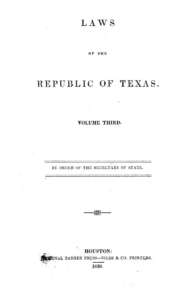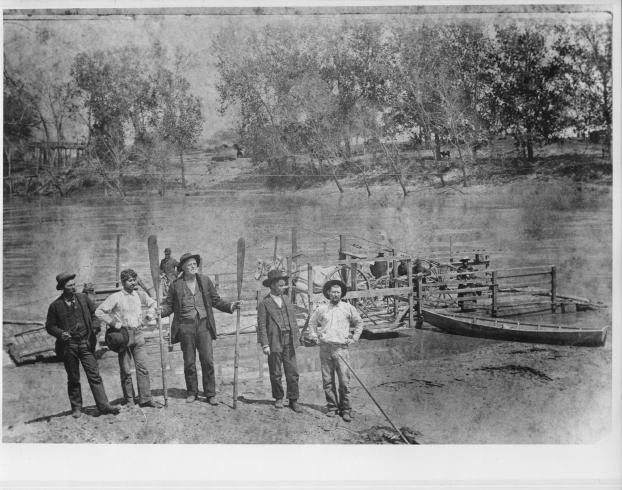Houston & Austin Turnpike – Early roads of the Republic of Texas
by Melinda Luna PE | History & Heritage Committee Chair
February 2023
Before 1800, the Spanish used trails laid out by Native Americans as roadways. With a population of less than 5,000 in 1800, there was no need for better roads. Once Texas was granted independence from Spain, the citizens of Texas began to survey cities and roads to assess what could be done to improve the roads. One obstacle that posed a challenge in the transportation on roads was the flooding caused by the many rivers in Texas. Flooding would limit travel and commerce due to the roads not being passable.

The Laws of Texas, 1822-1897, document the actions and organization of Texas after its independence from Mexico. The first turnpike company for the Republic of Texas was documented in The Laws of Texas. The Houston and Austin Turnpike Company was adopted on January 19, 1841. During this time period, ads were often named according to their termini. Specifications for the turnpike recommended that the roads be the straightest and most practical route between Austin and Houston. The company had $125,000 of capital, which is 31.4 million in today’s dollars. The law stated that the work on the road should begin within 12 months of the adoption of the act, with a proposed completion of the road within five years. The organization of the Houston & Austin Turnpike Company would expire in 25 years. The law also called for a ferry at the Brazos River with, eventually, a bridge to replace the ferry as soon as it was practical. The bridge had to be built so as not to obstruct the navigation of the Brazos River. The bridge also had to be located within 5 to 8 miles of the town of San Felipe de Austin. The law also named superintendents and commissioners in sections along the road who owned the stock in the company. These men consisted of farmers, physicians, surgeons, surveyors, and even Texas Rangers. These men included John D. Andrews, William Carper, Gail Borden, Jr. and Theodore Bissell.

In 1840, the population of Texas was about 70,000 and had doubled in the last five years. The largest city was San Antonio, followed by Houston. The first laws about roads did not specify what the road would be made of, whether it was a graded dirt road, a plank road, or another surface. Typically, roads were little more than trials at the time. Most roads had right turn angles and did not drain well—eleven years later (1852), only about 23 miles of roads had been graded. The law called for a road to be in “good repair and order: the consequences of not maintaining the road would result in the withholding of funds.
The act was signed by David S Kaufman, the speaker of the House of Representatives, Anson Jones, the president of the senate, and David G Burnet, the President of Texas. After this Turnpike company was organized, Texas organized 51 more companies to get roads built. Statehood would be granted to Texas and the process of how to fund roads revisited as now Texas was part of the United States. With the automobile needing better roads, the citizens formed “Good Roads” associations and that was the start of the modern road in Texas.



